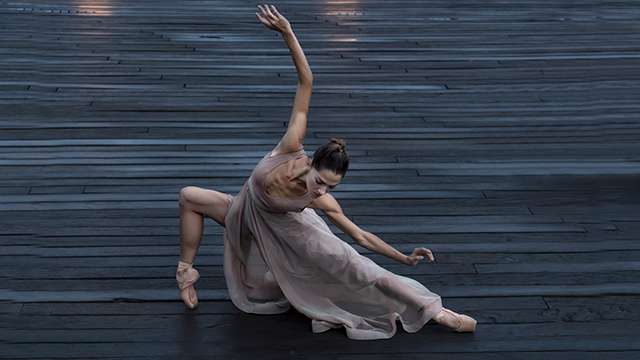Innovative Stress Fracture Protocol Identifies At-Risk Ballet Dancers
April 28, 2023 - Eden McCleskeyBallet dancers are known for their graceful movements and powerful performances, but behind the scenes, they can suffer from painful injuries. Stress fractures of the foot and ankle bones are common due to the repetitive and high-impact nature of the performance art.
In a recent study, Houston Methodist Orthopedics and Sports Medicine physicians who provide care for the Houston Ballet identify the risk factors and early-intervention strategies that have helped them reduce injury rates of dancers who've participated in the program.
"In our partnership with the Houston Ballet, we've really tried to create a model for what a sports medicine program can achieve and raise the standard of what caring for a ballet company means," said Dr. Vijay Jotwani, lead author of the study, published in the Journal of the American Academy of Orthopaedic Surgeons.
Dr. Jotwani said that early diagnosis, multidisciplinary management and individualized treatment plans can help prevent long-term complications such as chronic pain, decreased performance and financial and emotional distress.
The study's stress fracture protocol, developed by Houston Methodist, is believed to be the first of its kind implemented by a professional ballet company.
The study comes two years after Dr. Jotwani's team published a paper showing the program resulted in an 82 percent decrease in injury rates and longer periods between injuries. It was the first prospective, randomized, controlled trial of an injury prevention program for professional ballet dancers.
The protocol laid out in the paper offers multiple entryways into the program and is designed to reduce injury, improve outcomes and support the dancers' overall health and well-being. It can be triggered by an injury or anticipation that an injury might occur due to heightened risk.
Stress fractures are tiny cracks and inflammation in the bones that occur due to repeated stress or overuse. Female ballet dancers' lower extremities are particularly at risk for these types of injuries due to the high load and mechanical stress of supporting their entire weight on the tips of their toes.
The biggest risk factors for stress fractures in ballet dancers are female gender, low body mass index, low bone mineral density and inadequate nutrition, though injuries can also be caused by high training loads and biomechanical factors related to the dancer's environment or technique.
An abnormality noticed on a pre-participation physical, laboratory work, DEXA or body composition scan can result in a referral for evaluation. So can an artistic staff member or athletic trainer's concern regarding the dancer's weight loss or eating behavior.
The protocol recommends specific actions based on the potential cause of injury. If a biomechanical issue is identified, a physical therapy regimen built around the modifiable factor will guide return to dance. If an injury is secondary to training load, the focus will be on modifying the activity plan with the athletic trainer. If a calorie imbalance or eating disorder are identified, there will be mandated weekly dietitian visits and mental health counseling until the issue is resolved.
The Houston Methodist team, which also include study co-authors Dr. Joshua Harris, Dr. Justin Aflatooni and Lindsey Harris, has been asked to present at the International Association of Dance Medicine conference. It has published multiple studies as part of its partnership with the Houston Ballet.
Dr. Jotwani noted that a stress fracture protocol emphasizing early intervention is important because the treatment of dancer injuries currently so often involves prolonged rest.
"There are a lot of understandable pressures that come with performing these incredible athletic feats, but at the same time, there's a growing awareness that dancers can't dance if they're injured or unhealthy," Dr. Jotwani said. "It makes a big difference to have a formal intervention program developed with the full participation and buy-in of the management and staff, so the dancers know it's not just on them to deal with and figure it all out."


